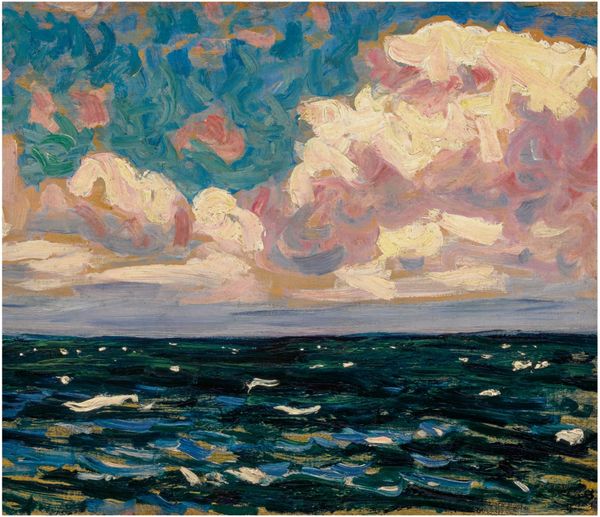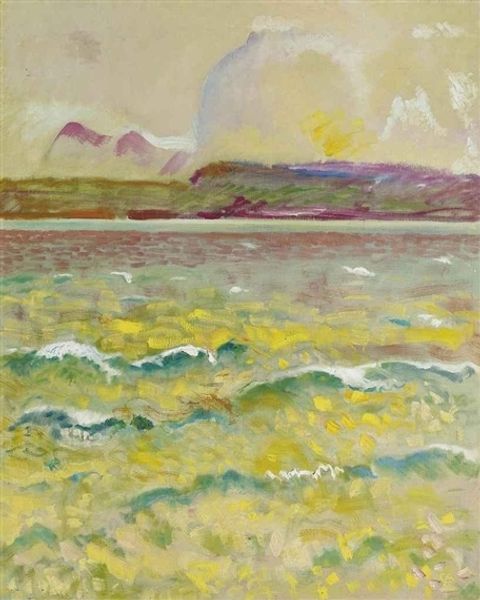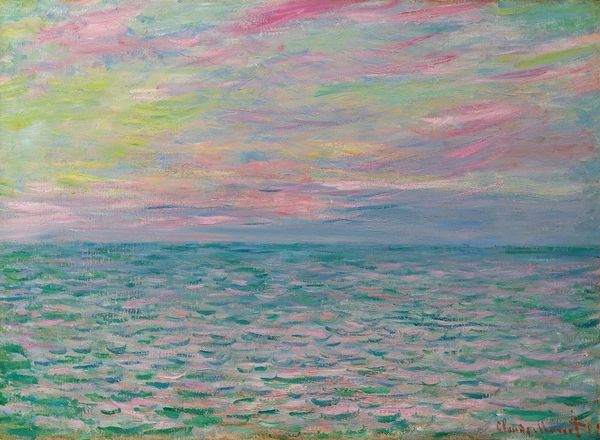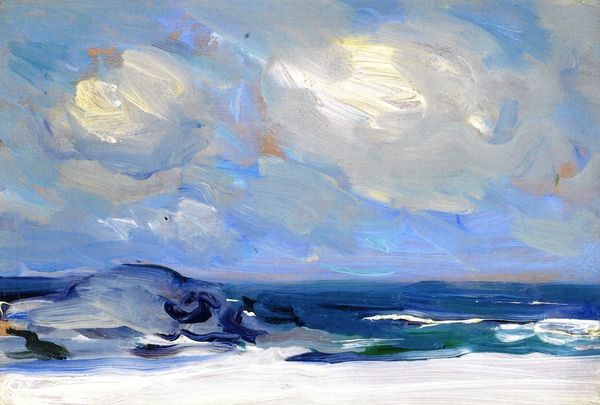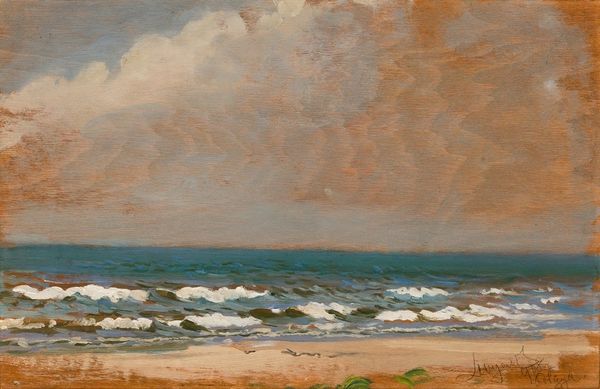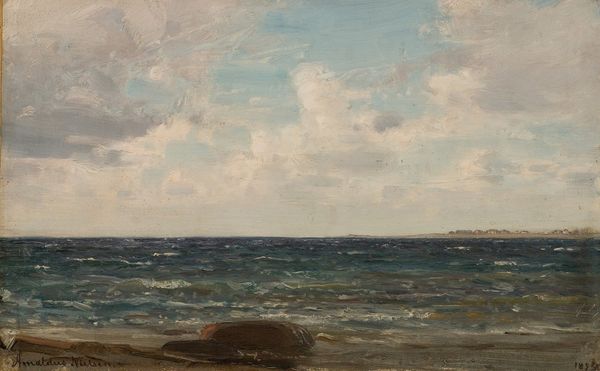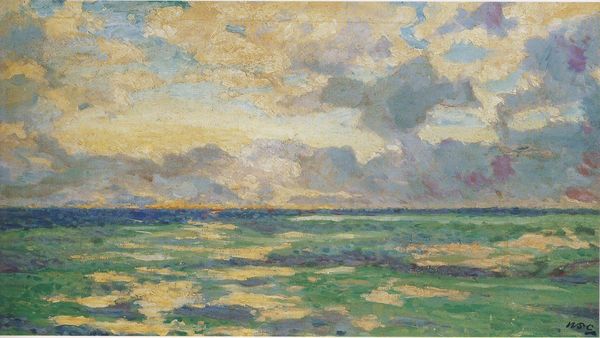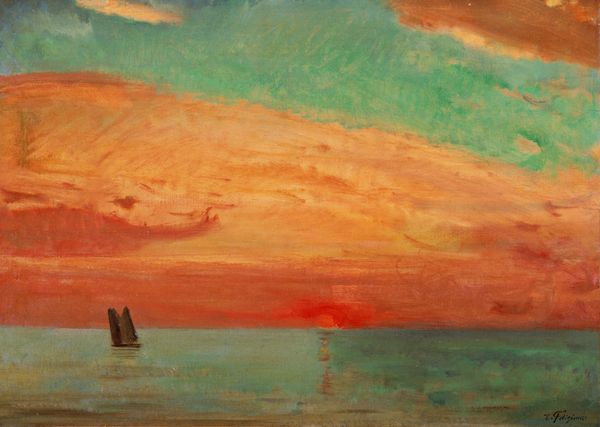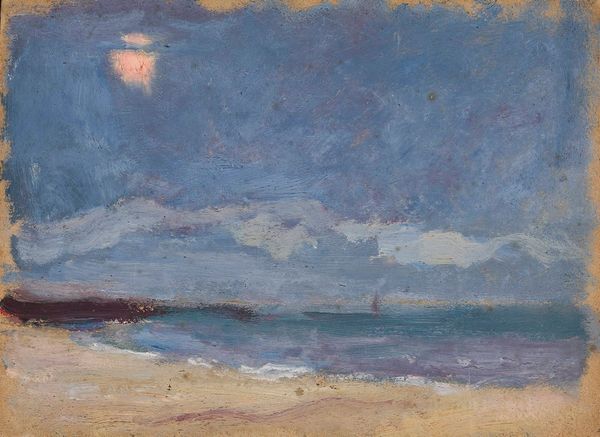
#
abstract expressionism
#
abstract painting
#
fauvism
#
landscape
#
impressionist landscape
#
fluid art
#
neo expressionist
#
acrylic on canvas
#
seascape
#
paint stroke
#
expressionist
Copyright: Public Domain: Artvee
Curator: Henri Martin, the creator of this expressive seascape entitled "Au Bord De La Mer," really evokes a sense of raw emotion in his rendering. Editor: It certainly does. Looking at the churning blues and greens of the sea, and the tumultuous clouds gathering above, there's a palpable feeling of tension, maybe even foreboding. Curator: I wonder if that unease comes from a particular historical moment. Impressionism often grappled with the rapidly changing world. How do you see that context shaping this artwork? Were there certain socio-political undercurrents influencing even something as seemingly benign as a seascape? Editor: Undoubtedly. Landscapes, seascapes included, became vital for national identity construction in France, especially after periods of turmoil like the Franco-Prussian War. Consider also the burgeoning tourism industry – seaside destinations were rapidly becoming leisure spaces. These images bolstered the appeal, sanitizing realities like maritime labor and the environmental impact. Curator: So, this image, through its absence of specific human activity, becomes almost symbolic. I'm seeing a discourse on ownership, possibly, or an idealized fantasy accessible only to a certain segment of society, primarily white and well-off. It reminds me how visual media and popular belief become tools to create exclusivity through landscapes. Editor: Precisely! And technically, that brushwork reinforces this curated vision. Quick, broad strokes idealizing a "perfect day". While not overtly political, the imagery is absolutely participating in broader socio-economic conversations of the time. It subtly underscores who is given permission to be at peace in this scene. Curator: It's powerful how even in an ostensibly natural scene, the brushstrokes, color choices, and composition embed layers of socio-political commentary on national and class identity. A reminder of how no work of art is ever truly apolitical. Editor: Absolutely. Considering the historical period, this scene becomes as much about what’s deliberately excluded as what's represented, prompting consideration for our perceptions of public space. Curator: These interpretations highlight the enduring resonance art offers and invites conversations regarding its political implications in past eras and the pressing matters of today. Editor: Right, looking at Martin's seascape through a critical lens certainly adds a new layer to its appreciation, doesn't it?
Comments
No comments
Be the first to comment and join the conversation on the ultimate creative platform.
